
Canning Downs was the first residential establishment built by a white person on the Darling Downs in Queensland, Australia. It is located a short drive from the town of Warwick and originally extended south east to Killarney and the McPherson Range. The area was first named after the British statesman George Canning by Allan Cunningham.
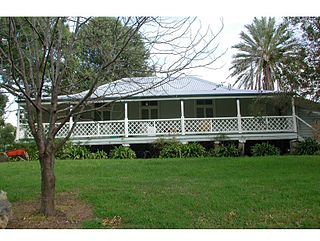
Jondaryan Homestead is a heritage-listed homestead at Evanslea Road, Jondaryan, Toowoomba Region, Queensland, Australia. It was the base of the former Jondaryan pastoral station, which was originally taken up in 1840, and at one time was the largest freehold station in Queensland. The site contains the current house, which was built after the original was destroyed by fire in 1937, the original kitchen dating from 1844, and a kitchen, butcher's shop, shearer's quarters, stables, dairy, toilet block and store, many dating from the 1860s. It also contains the remains of horse stalls, a slaughterhouse, hide store, and Chinese gardener's glasshouse. It was added to the Queensland Heritage Register on 21 October 1992.
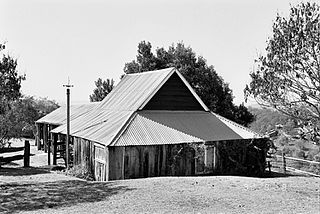
Slab Hut Farm is a heritage-listed farm at 847 Mt Nebo Road, Enoggera Reservoir, City of Brisbane, Queensland, Australia. It was built from 1890s to 1890s. It was added to the Queensland Heritage Register on 21 October 1992.

Franklyn Vale Homestead is a heritage-listed homestead at Franklin Vale Road, Mount Mort, City of Ipswich, Queensland, Australia. It was built in the early 1870s. It was added to the Queensland Heritage Register on 21 October 1992.

Ballandean Homestead is a heritage-listed homestead at Ballandean, Southern Downs Region, Queensland, Australia. It was built from c. 1840 to 1890s circa. It was added to the Queensland Heritage Register on 21 October 1992.
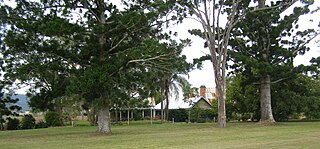
Cressbrook Homestead is a heritage-listed homestead at off Cressbrook-Caboombah Road, Cressbrook, Somerset Region, Queensland, Australia. It was built from 1841 to 1914. It was added to the Queensland Heritage Register on 21 October 1992.

Monsildale Homestead is a heritage-listed homestead at 2532 Monsildale Road, Monsildale, Somerset Region, Queensland, Australia. It was added to the Queensland Heritage Register on 3 April 2009.
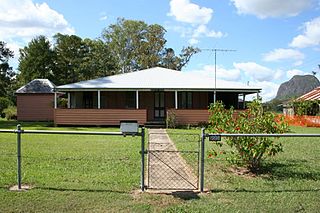
Bankfoot House is a heritage-listed homestead at 1998 Old Gympie Road, Glass House Mountains, Sunshine Coast Region, Queensland, Australia. It was built in 1878. It was added to the Queensland Heritage Register on 11 December 2008.

Booubyjan Homestead is a heritage-listed homestead at Booubyjan Road, Booubyjan, Gympie Region, Queensland, Australia. It was built from the 1860s to the 1870s circa. It was added to the Queensland Heritage Register on 21 October 1992.
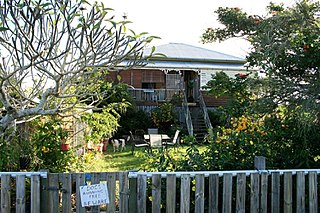
Colonsay Farm is a heritage-listed farm at 125 Doolong Road, Kawungan, Fraser Coast Region, Queensland, Australia. It was built in 1909. It is also known as Doolong Farm. It was added to the Queensland Heritage Register on 11 March 2011.

Langmorn Homestead is a heritage-listed homestead at Langmorn Road, Raglan, Gladstone Region, Queensland, Australia. It was built from 1873 to 1926. It was added to the Queensland Heritage Register on 21 October 1992.
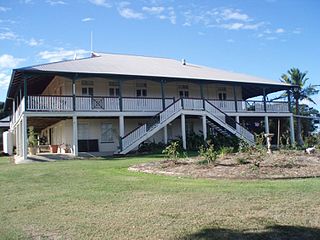
Raglan Homestead is a heritage-listed homestead at Raglan Station Road, Raglan, Gladstone Region, Queensland, Australia. It was built from c. 1857 to 1913. It is also known as Raglan Station. It was added to the Queensland Heritage Register on 21 October 1992.

Gracemere Homestead is a heritage-listed homestead at 234 Gracemere Road, Gracemere, Rockhampton Region, Queensland, Australia. It was built from 1858 to 1890s. It was added to the Queensland Heritage Register on 21 October 1992.

Strathmore Homestead is a heritage-listed homestead at Strathmore Station on Strathmore Road, Springlands, Whitsunday Region, Queensland, Australia. It was built from the 1860s onward. It is also known as Strathmore Station. It was added to the Queensland Heritage Register on 13 November 2008.

Taabinga Homestead is a heritage-listed homestead at 7 Old Taabinga Road, Haly Creek, South Burnett Region, Queensland, Australia. It was built from 1846 to 1864. It was added to the Queensland Heritage Register on 21 October 1992.

Musgrave Telegraph Station is a heritage-listed former telegraph station and now roadhouse at Peninsula Developmental Road, Musgrave, Yarraden, Shire of Cook, Queensland, Australia. It is also known as Musgrave Roadhouse. It was added to the Queensland Heritage Register on 21 August 1992.

Kilbirnie Homestead is a heritage-listed homestead at Argoon-Kilburnie Road, Jambin, Shire of Banana, Queensland, Australia. It was built in 1884. It was added to the Queensland Heritage Register on 21 October 1992.
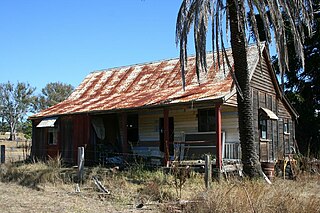
King's Boarding House is a heritage-listed boarding house at Maidenwell-Cooyar Road, Maidenwell, South Burnett Region, Queensland, Australia. It was built in 1889 by John King. It was added to the Queensland Heritage Register on 17 September 2010.

Tarong Homestead is a heritage-listed homestead at Cooyar Road, Tarong, South Burnett Region, Queensland, Australia. It was built from 1840s to 1890s. It was added to the Queensland Heritage Register on 21 October 1992.

Boondooma Homestead is a heritage-listed homestead at Mundubbera–Durong Road, Boondooma, South Burnett Region, Queensland, Australia. It was built from the 1850s to the 1870s. It was added to the Queensland Heritage Register on 21 October 1992.






















